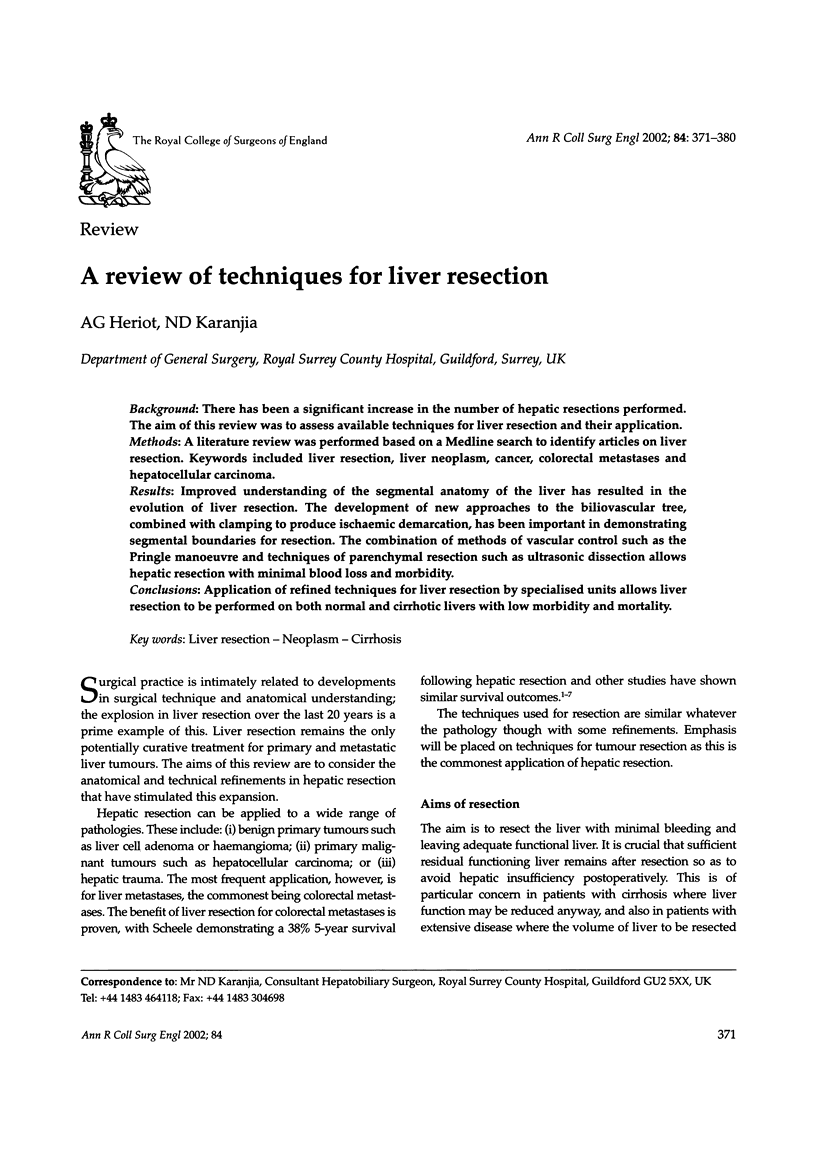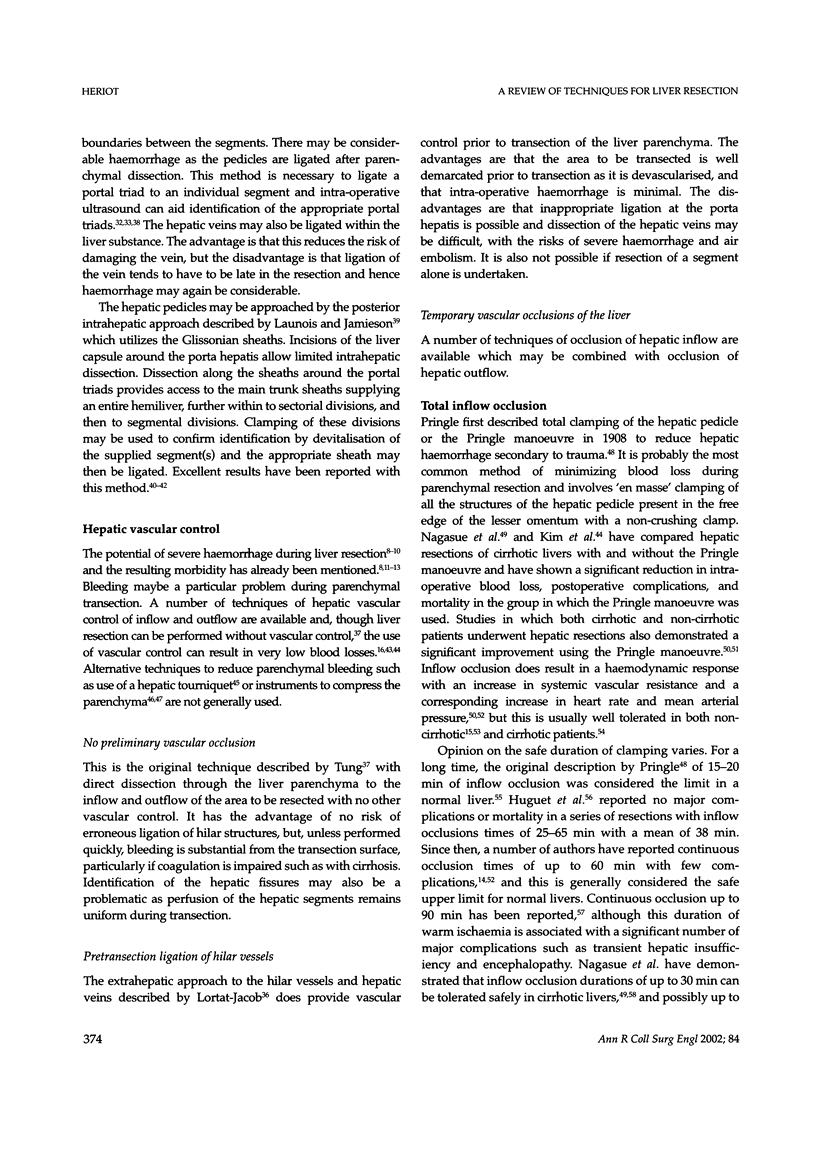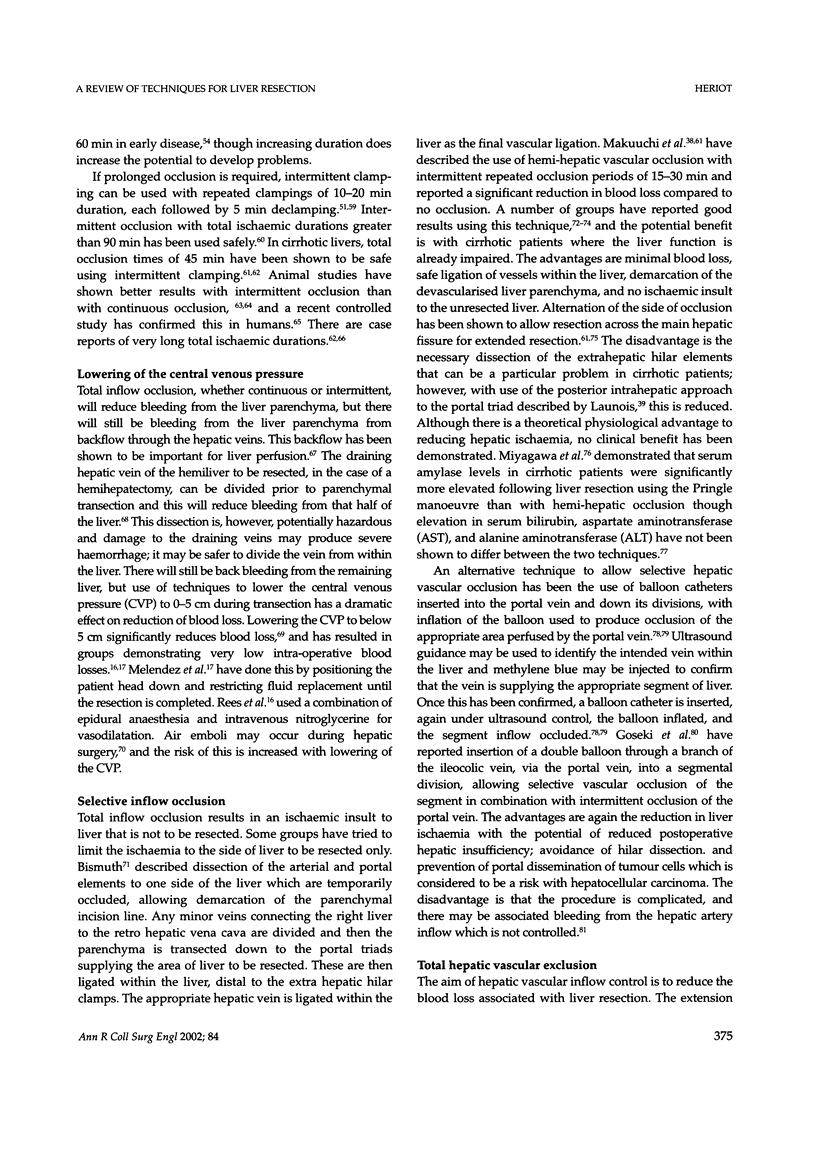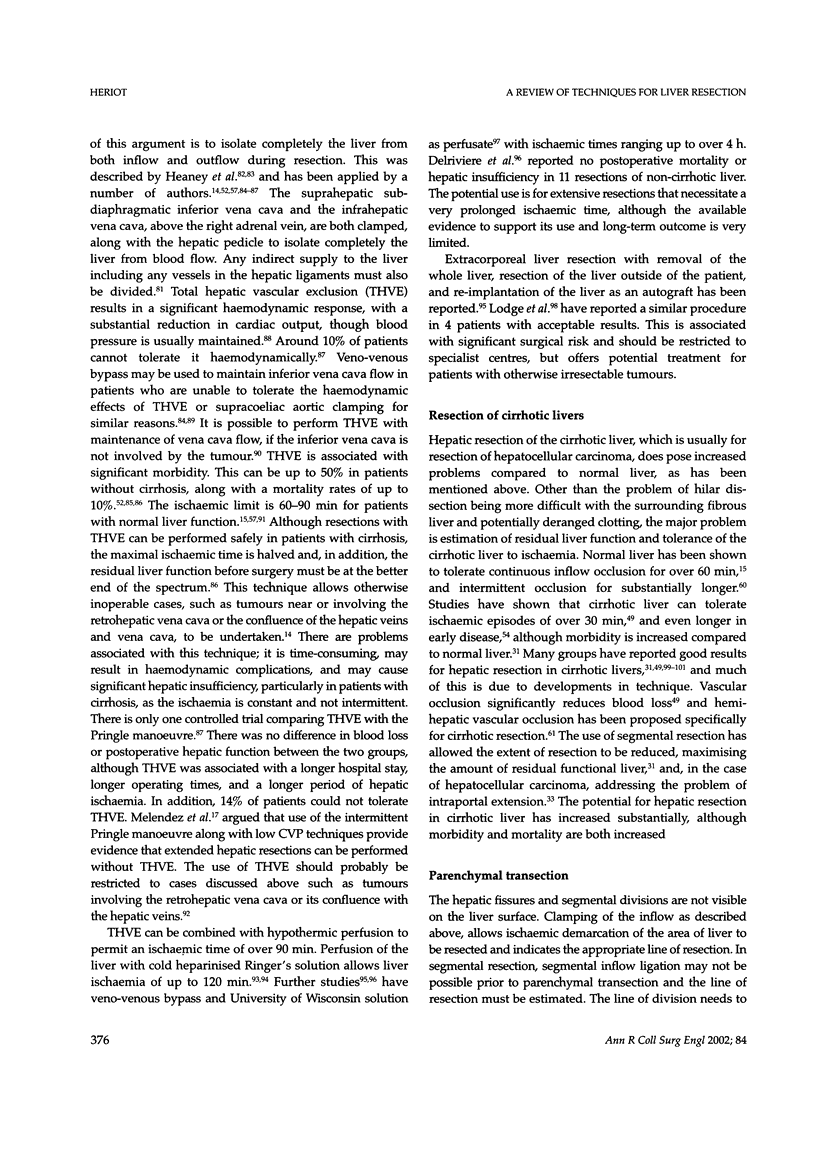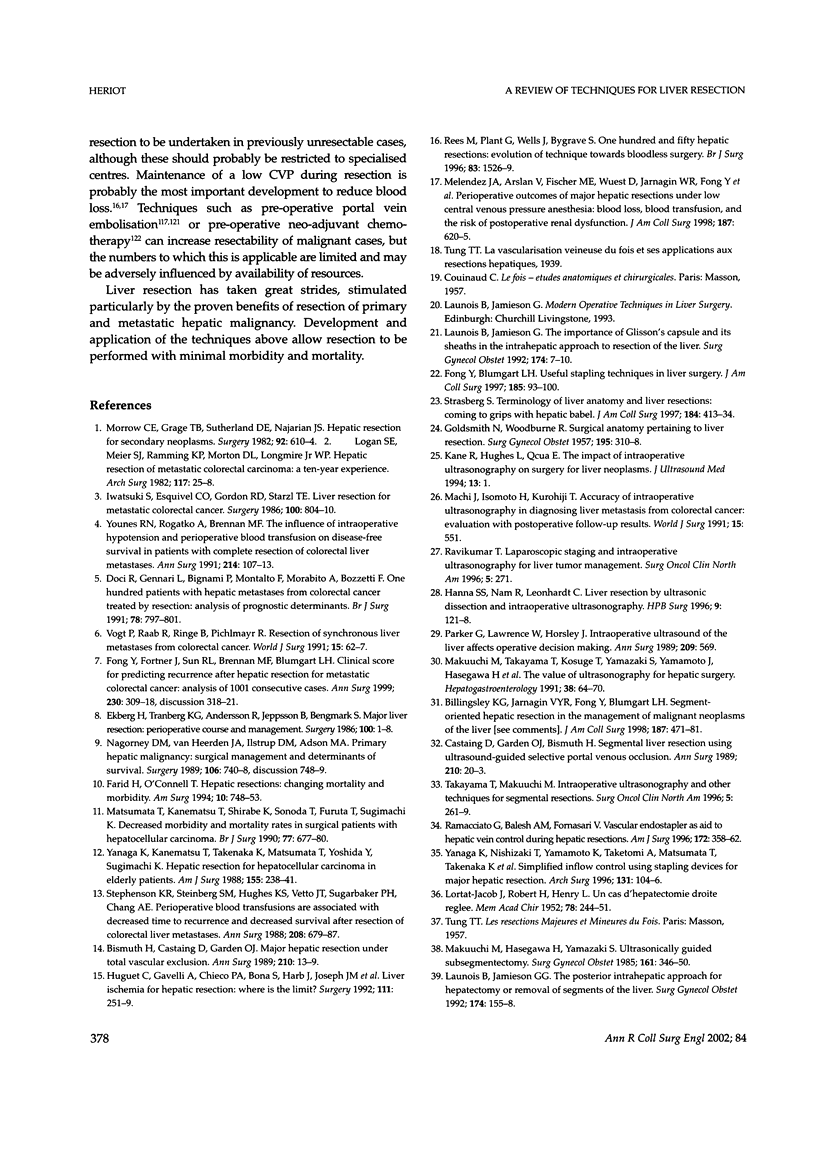Abstract
BACKGROUND: There has been a significant increase in the number of hepatic resections performed. The aim of this review was to assess available techniques for liver resection and their application. METHODS: A literature review was performed based on a Medline search to identify articles on liver resection. Keywords included liver resection, liver neoplasm, cancer, colorectal metastases and hepatocellular carcinoma. RESULTS: Improved understanding of the segmental anatomy of the liver has resulted in the evolution of liver resection. The development of new approaches to the biliovascular tree, combined with clamping to produce ischaemic demarcation, has been important in demonstrating segmental boundaries for resection. The combination of methods of vascular control such as the Pringle manoeuvre and techniques of parenchymal resection such as ultrasonic dissection allows hepatic resection with minimal blood loss and morbidity. CONCLUSIONS: Application of refined techniques for liver resection by specialised units allows liver resection to be performed on both normal and cirrhotic livers with low morbidity and mortality.
Full text
PDF